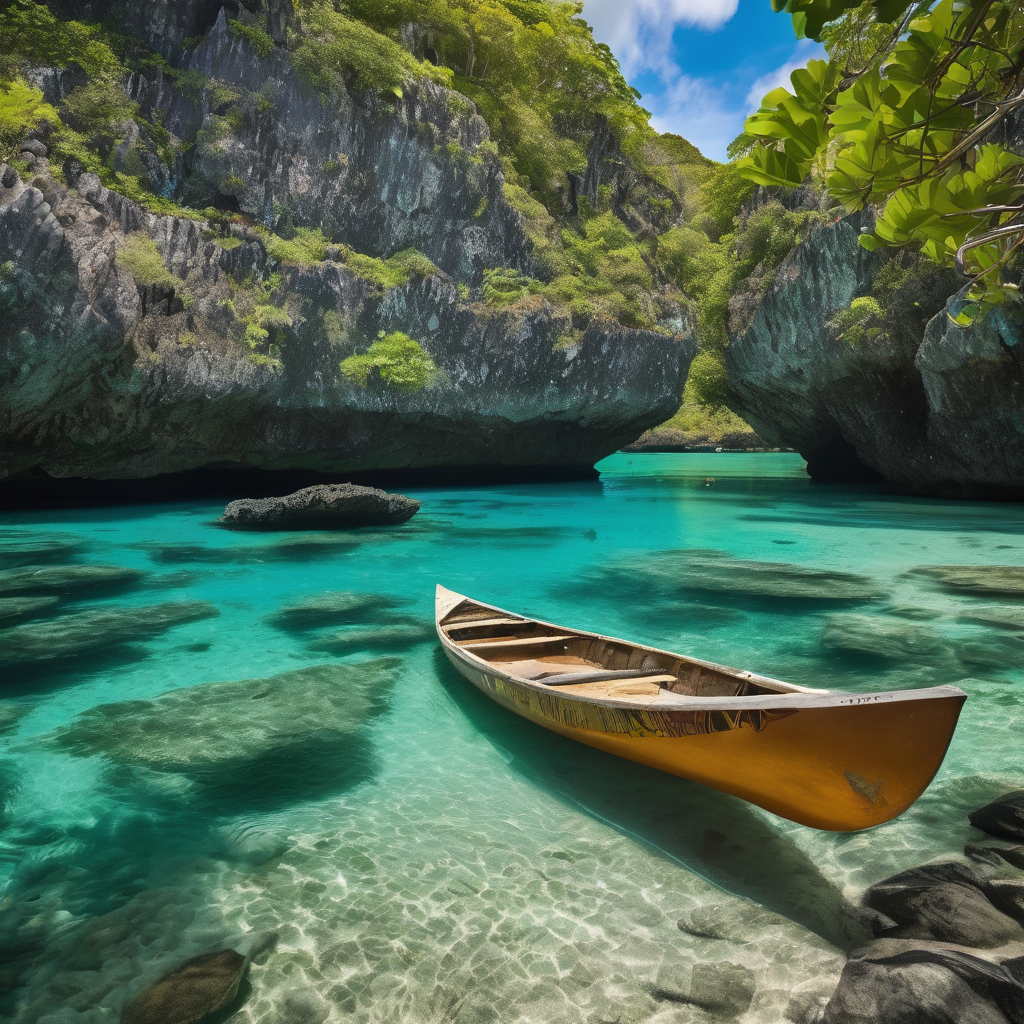The Sawa-i-Lau Caves, perched in the Yasawa Islands of Fiji, are esteemed not only for their captivating natural beauty but also for their significant cultural heritage. These limestone formations, sculpted through thousands of years by the relentless forces of wind, water, and waves, are a celebrated emblem of the region, often referred to as “the heart of Yasawa.”
Rich in legend, the caves are intertwined with Fiji’s ancient history, making them a vital spiritual site. One popular tale recounts the story of a beautiful Fijian princess who sought refuge with her lover from an unwanted arranged marriage. They hid within the caves’ cool chambers, finding solace until tragedy struck when a powerful hawk attacked the princess. The heartbroken chief avenged her death by killing the hawk, turning their love story into a poignant narrative that has been shared among generations in Yasawa.
Another legend links the caves to Ulutini, a god revered in Fijian mythology, believed to have ten heads. Locals consider the caves sacred, thinking they represent the divine resting place of Ulutini, with each chamber symbolizing one of his heads. Visitors often report feeling a unique stillness in the chambers, attesting to the caves’ profound spiritual atmosphere.
Adding to the mystique are tales of elusive guardians, including mythical fish and a large eel, said to dwell within the cave’s inner pools, enhancing the site’s connection to local folklore. The Sawa-i-Lau Caves also gained global recognition after featuring prominently in the 1980 film “The Blue Lagoon,” which showcased their stunning turquoise waters and dramatic rock formations, drawing countless travelers to experience their enchanting allure.
Among the notable features of the site is the second cave, known as Qara ni Bukete or “the pregnancy cave.” Local folklore dictates that no pregnant woman can pass through its underwater tunnel, further weaving superstition and tradition into the cave experience.
Today, the Sawa-i-Lau Caves serve as a powerful nexus of natural wonder, history, and myth. For Fijians, they represent a sacred place where ancestral spirits and ancient gods continue to watch over the land. For visitors, the caves offer not only breathtaking scenery but also a rich tapestry of the spiritual and cultural essence of Fiji. This union of legend and landscape creates a breathtaking destination that resonates with both local heritage and global curiosity. As interest in these sites grows, there is hope that such attractions will foster appreciation for Fiji’s rich traditions and storytelling, enhancing local tourism sustainably.
